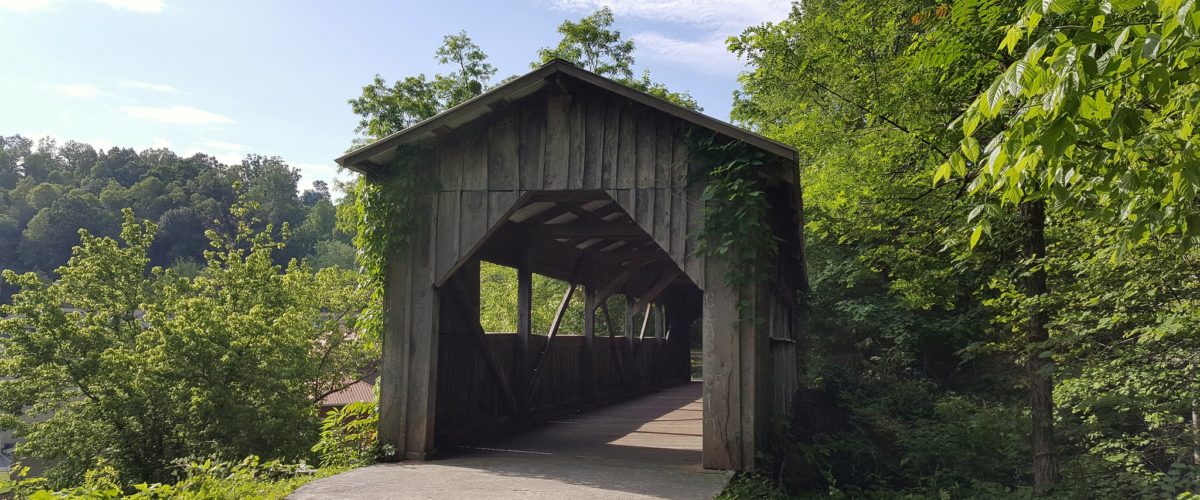If Amish and Baptists singing hymns together in rural Appalachia isn’t an expression of Christian unity, Joshua Hearne says, nothing is.
And it demonstrates the embrace of relevance and change churches need in their increasing struggles to survive, said Hearne, a founder and leader of Grace and Main, an intentional Christian community in Danville, Virginia.

Joshua Hearne
“Real change begins with imagination,” he said. “The solutions to our problems will not be built with the same stuff that created them.”
Hearne and his colleagues in Danville have plenty experience doing the hard work for systemic change in working with addicts, the imprisoned, those living on the street and those struggling for fair housing, among many others.
But Hearne said he was especially taken when he heard that First Baptist Church in Middlesboro, Kentucky, had embarked on an Appalachian immersion experience to begin to build relationships with their neighbors.
The experiment recently included hosting a group of Amish volunteers visiting the area to repair an historic settlement in the Cumberland Gap National Historical Park.
An aspect of the encounter that Hearne said lit his imagination – and helped inspire an article he wrote for the Cooperative Baptist Fellowship – was the image of the Baptists and Amish singing a cappella at the settlement during a thunderstorm.
First Baptist’s embrace of creativity in the face of challenge and its avoidance of toxic charity, Hearne said, makes it all a “remarkable moment.”
Hearne spoke with Baptist News Global about his article and about his own experiences avoiding toxic charity. His comments are presented here, edited for clarity.
What’s new at Grace and Main?
We’re doing well. Our 10th anniversary is this November. We just had a baby born into the community. We have a sister getting out of jail this month. We have people who have moved into their own shelter for the first time in years and years. We are celebrating a bunch of sobriety anniversaries this summer. We are doing very well.
Two and a half Baptists singing hymns with two dozen Amish, and some park rangers. Is that what drew you to write about this project?
I heard that story from a couple different people who were there. As soon as I did, I knew that was the moment I was going to circle around. There is something powerful there. There is a unity expressed in that moment. You have different people with different world views and different imaginations for the world gathering together and singing together, even if just for a moment.
I went and did some research about the Amish hymnody. There is not a lot of overlap between the modern Baptist hymnal and the Amish song book. There is something beautiful about singing the song you share even though you don’t share many songs.
Were you also drawn to the story of a congregation trying to avoid toxic charity in its outreach?
I am specifically looking for ministries and churches with ideas on alternative approaches to doing church. I was very interested in this Appalachian immersion project. I think their approach is informed by ideas around avoiding toxic charity. There is sort of a history of people “othering” Appalachia and Appalachian people. There is this tendency to refer to it to this bleak and poor wasteland where nobody knows how to take care of themselves. That is generally despised by the people who live there. I wanted to hit that note in the piece I wrote. I wanted to work against that pre-existing cultural narrative about the region.
How does that “othering” usually work?
A lot of people come in and say “we gotta go in there and help those poor mountain people.” It’s not that there aren’t people in Appalachia who need help. But they are no different from people in your neighborhood.
How is the congregation approaching that?
I think the church itself is trying to build relationships and build local capacity. It’s not just droves and droves of outside people coming in to do things that could be done by people who live there. The goal is to rebuild capacity at the ground level. Unfortunately, there is a great history of people coming in and deciding for people in Appalachia. At various points in its history it has been dominated by the decisions of people who don’t live there.
Why does substantial change take so much time?
That’s mostly a reflection of my own experience. It is not difficult to create the appearance of change. It’s easy to be satisfied with surface change. But to actually change the underlying systems, that takes time. It’s a slow process. It’s a meticulous process.
Is that because it goes back to relationships?
If you can think about the important changes in your life, I bet most of them are connected to a person or a relationship and not just an idea or a book or your education. Ultimately, the real change comes through relationships and we often time need people to walk us through it.
Is that your experience at Grace and Main?
I’ll tell you a story.
There was a building in Danville where we began to build relationships with people who were being taken advantage of by their landlord. We finally celebrated the building being shut down and all tenants being moved into better places around the city, and we celebrated that the tenants themselves had done it themselves. They had been the leadership team. And when we celebrated that, a staff member at a local nonprofit came up to me over hotdogs and said “I can’t believe y’all waited four years to get us involved in this. We could have fixed it right away.” I said we spent four years eating meals and planting flowers and laughing at stupid jokes and hanging out in their apartments, and then when they were ready, we were able to help the tenants be in charge of the work.
And some of those leaders who were part of that process became leaders in the other work that we do. We needed systemic change and systemic change happens through relationship. That will one day allow for all of us together to make change because we sit around and learn to love each other and trust each other.


